Graham Reid | | 9 min read
Joshua Redman: Soul Dance (with Pat Metheny, Charlie Haden and Billy Higgins, 1994)
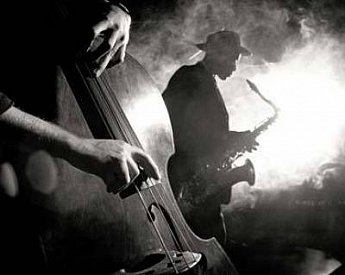
If rock is the culture which eats its
young -- or at least allows Kurt Cobain to leave a suicide note which
says “I need to be slightly numb in order to regain the enthusiasm
I once had as a child” -- then jazz is the music which barely
allows youth to exist at all.
The contract of jazz almost demands its
young artists leap fully grown into the world not only as inheritors
of a century-long lineage, but also bringing with them their own
voice. Not for the jazz musician of the Nineties the luxury of
working things out over a few albums or thrashing away, Ramones-like,
in some dank club where enthusiasm is all and it doesn’t matter
what the thing sounds like.
Growing up in jazz is done on the
bandstand or on record where critics, both professional and amateur,
can cheerfully impale a new voice and budding career on two spikes:
that of being too faithful in the re-creation of the music that went
before (“what you wanna sound like Miles Davis?") or for being
too unfaithful to the music which went before and taking off in new
directions (“Hey, man, what you wanna diss Miles for?”).
Play a straight bat to the music of
your mentor of the late Fifties, say, and you are dismissed as a mere
copyist: Wynton Marsalis is not as good as Miles, pianist Stephen Scott sounds
too much like McCoy Tyner. . .
But take off from where you live in the
Nineties into some collision of bebop and hip-hop and you are really
in trouble. Look at what critics said about Miles Davis’ last,
unfinished album where he teamed up with Easy Mo Bee for Doo-Bop: “A
perversion,” wailed one American critic, adding that the “real
music" was drowned under the “tyranny of the hip-hop beat.”
As Mike Zwerin noted in the
International Herald Tribune: “Change the vocabulary slightly and
the same thing could have been written 50 years ago by defenders of
another 'real thing’."
Being a young musician who is
technically competent, respectful, innovative, steeped in tradition
and in command of your own sound is a big ask, as the sportspeople
would say.
Particularly if you are only 22. You’ve
got to feel some sympathy, then, for American pianist Peter Delano,
who is being touted by his record company, Verve, as one of their
“most promising signings."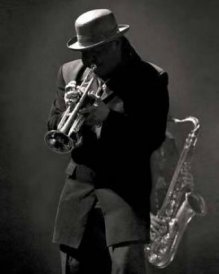
The kid is only 17.
Well, if Harry Connick Jr can turn a
profit on an album he recorded when he was 11, why not someone who
can at least hail his own cab home after the gig?
But if pressure from critics and the
older jazz Establishment isn’t bad enough, there are record
companies with often artificial expectations of healthy sales figures
and who are buoyed by the successful marketing of Wynton Marsalis in
the Eighties.
Record companies can breathe hot and
hard down the necks of those who don’t turn a profit, and jazz,
where careers take literally a lifetime, doesn’t work from the same
pop-for-profit impetus that accountants understand. Ask Joe
Henderson, who only now, in his late 50s, is getting his due respect
- and sales figures to match.
“I like the fact I didn’t get a
record deal right away," 29-year-old tenor saxophonist Javon
Jackson told Downbeat two years ago, “because this way I was able
to achieve a certain musicianship and maturity.”
And that pressure to sell records is
certainly out there concedes 24-year old pianist Stephen Scott,
recently signed to the Verve label and, like teenager Delano, tipped
to be part of the rejuvenation of that venerable label along with
trumpeter Roy Hargrove (age 24) and bassist Christian McBride (22).
Nobody will confirm how much these
young artists signed their contracts for, but Hargrove and trumpeter
Wallace Roney (recently signed to Warner) have probably autographed
the bottom line for around $US80,000 ($NZl35,000).
That's a lot of money in the jazz world
and until recently was the kind of figure only top-line players could
command.
It has brought some envious comments
from older jazz figures, some particularly stung because they hear
little original from the young musicians but plenty of repetition of
their own youthful licks.
But that needs to be put in
perspective, too.
You can’t feel envious of young
musicians who now have to sell upwards of 50,000 copies of their
albums, at least, for the record companies to get a return on their
investment. And very few jazz artists manage to do that -- although,
of them all, Hargrove comes the closest of the new crop. The real
exception is Warner act Joshua Redman, whose Wish album has sold
almost l00,000, but Hargrove’s previous albums, when he was signed
to Novus, sold around 30,000 copies each. That's at the high end of
typical.
The pressure is on to play up . . .
and ship out.
"Yeah," says Scott
optimistically, “but if you learn to deal with that whole history
of jazz, it strengthens what you do and you’re not so worried about
trying to sell records.
“What you are trying to do is make
some music. Critics and writers, like the rest of us, listen to those
records by Joe Henderson or whoever, then they say that Roy might
sound like Freddie Hubbard or I might sound like McCoy Tyner. But
they don’t wait to see what we are going to do with that. They
don’t realise there is a process to creation and it’s not just
about an immediate product.”
"And it all starts with
emulation,” says Hargrove, who admits he wants to sell records in
big numbers.
Wynton Marsalis has sold almost half a
million copies of Hothouse Flowers, and the trickle-down effect of
that sort of success keeps the ball rolling: as a supporter of jazz
education he has been responsible for more college programmes and
competitions . . . and from these come more musicians, of higher
calibre, so more record companies get interested, then theres a
bidding war for young blades . . .
So it goes.
“I don’t feel pressure to sell
records,” says trumpeter Wallace Roney. “If I did, I’d try to
make music that sells. That's not how I see myself. I have to believe
the label feels the same way.”
And if Roney and others wanted to sell
records, they would simply do what others before them have done:
dilute their sound, mesh with a New Age attitude and sell six million
copies as saxophonist Kenny G. has done.
(Kenny G. might be rich, but he’s
also the butt of some of the best jokes in jazz: Kenny G., Stalin and
Hitler are all in a room and you’ve got a gun with only two
bullets. What do you do? Shoot Kenny G. twice.)
The way to sell records in jazz can
also be to go the exact opposite route, to remain credible, align
yourself with the tradition and work from the ground up.
It’s notable that Roney’s latest
album is a tribute to Miles Davis, on which he plays alongside
members of Davis’ Sixties band. It’s the policy that Verve, with
a past and an eye to the future, is pursuing.
The new Hargrove album has him
alongside players such as Joe Henderson, Stanley Turrentine and
Johnny Griffin, who are three decades and more older than him;
pianist Scott has accompanied established artists Betty Carter and
Benny Golson as well as playing on Henderson's Lush Life album.
The critics therefore may see more
divisions between older and younger players than actually exist.
“Yeah, look over there,” says
Hargrove as he stands in the lobby of a New York theatre where the
generations of jazz have gathered for a concert. “There’s
Christian McBride talking with Ray Brown,” and gestures across to
where the youthful bassist is chatting amiably with the veteran of
Dizzy Gillespie, Count Basie and Duke Ellington bands.
Such cross-generational contacts -- and
recording -- have always been the lifeblood of jazz. And it seems the
record companies are aware of the need for long-term commitment to
their young signings.
They are certainly saying as much.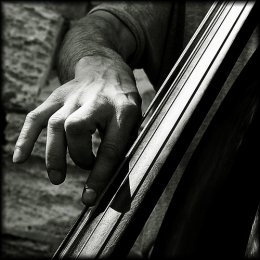
“You have to sign artists based on
your faith in their future,” says president of the Blue Note label
Bruce Lundvall.
“You must feel confident that the
artist will have the potential to exist beyond his current releases,”
George Butler, senior vice-president at Columbia, told Billboard
magazine in April.
For the young musicians themselves,
their part of the contract is clear. It might not overtly be to sell
the records, but it is certainly to make the music.
“We’re in a study period right
now," says bassist McBride. “We’re taking our time to find
our own voices.”
“I’ve been fortunate in having the
opportunity to record with other people as well as under my own
name," says Hargrove. “It’s important to have that
experience, like playing with Jackie McLean, who has been out there
for a long time. It means when I come to make my own records I’ve
been able to absorb all that information and the important thing
about being a young musician is to have that kind of experience."
And if this current crop of under-30s
has something useful going for it, it’s that they are not alone out
there. The list of young players coming from similar backgrounds and
with similar goals is impressive -- quite a jazz renaissance, in
fact.
There’s pianist Cyrus Chestnut, whose
debut album as a leader, Revelation, is exactly that; Hammond
organist Joey De Francesco, who seems wise well beyond his 23 years
when he plays with guitarist John McLaughlin’s Free Spirits; tenor
player Joshua Redman and drummer T.S. Monk (the sons of Dewey and
Thelonious respectively); young altoist Christopher Hollyday, who at
24 has four albums behind him . . .
And if there’s an emergent young
super-group out there -- albeit one with a slight recording history
and a profile that skims just above non-existent at the moment --
it’s Black/Note, an LA-based group signed to Columbia.
Their pedigree, such as any can be for
artists under 30, is impressive and the straight-ahead post-bop on
their debut album suggests a band, and individuals, with unlimited
potential.
Their leader is 27-year-old bassist
Mark Shelby, who has studied with Charlie Haden and classical player
Peter Rofe of the Los Angeles Philharmonic. As with the other
members, he’s a music graduate who has won creditable scholarships.
Saxophonist James Malone (23) studied classical music and won the
Shelly Manne Memorial Young Talent Award, drummer Willie Jones III
(25) and 29-year-old pianist Ark Sano both finished in the finals of
Thelonious Monk competitions on their respective instruments and
between them can claim to have played alongside Cedar Walton, Red
Holloway and Arturo Sandoval.
As with all these new young lions of
jazz, they are making it by supporting each other and playing
together.
“Even before Wynton, there were
musicians trying to play this music,” drummer Winard Harper of the
Harper Brothers Band told Downbeat two years ago. “But there are
not a lot of opportunities for guys coming out of school to have a
job and be working on their craft. If there are more bands, there are
more working situations for all of us to learn.
“So regardless of whether Roy
Hargrove, say, hasn't had a chance to work with anybody, if he has
his own band out there, he’s giving four or five other guys an
opportunity to be working and learning how to play.”

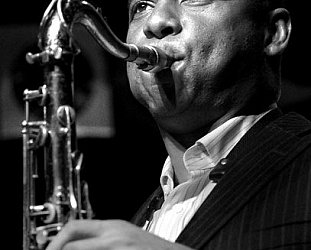
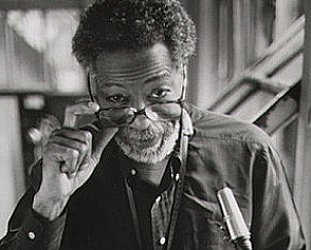
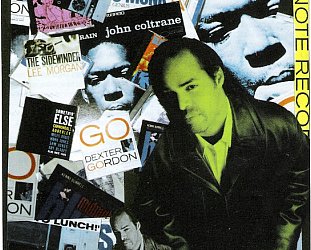

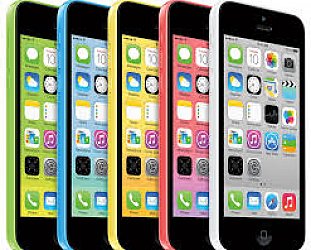

post a comment